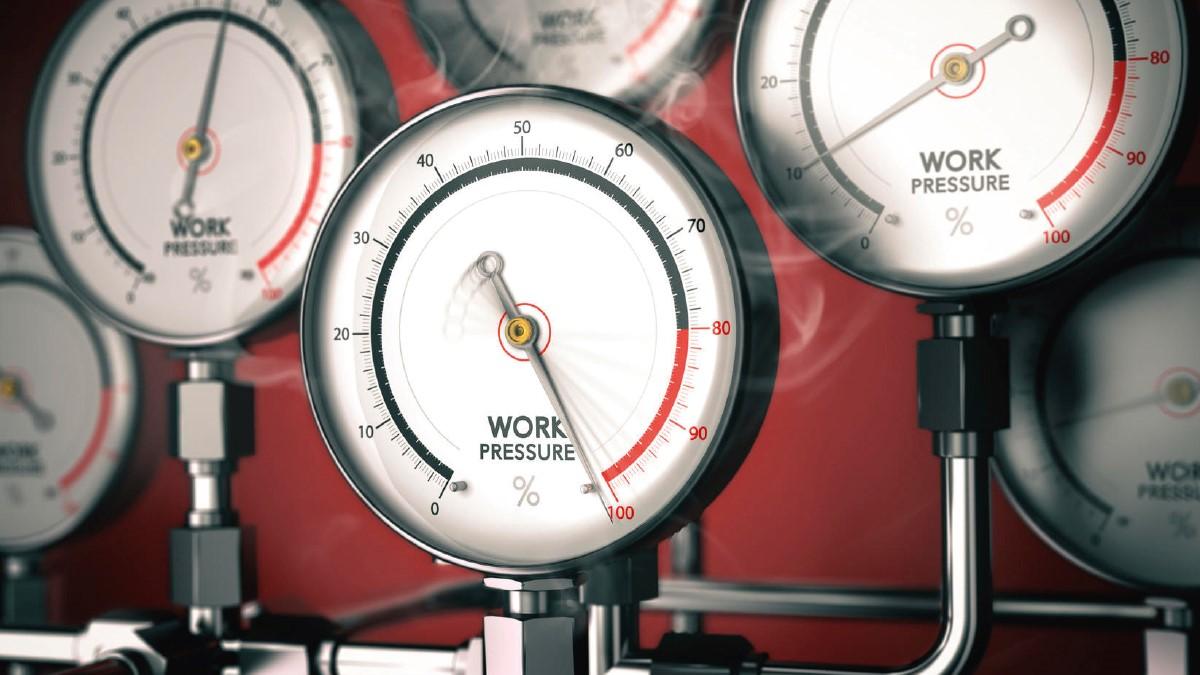In the first of two-part series, CSP professional adviser Gwyn Owen looks at ways to tackle pressures at work.

The CSP’s Pinpoint the Pressure workplace campaign ran throughout last year. As the title and logo suggest, it focuses on helping members to recognise sources of stress in the workplace. It promotes collective problem-solving and action to reduce pressure in practice. Data from the campaign’s survey of workplaces confirms that members have limited access to continuing professional development (CPD) opportunities. Members say this is a significant cause of pressure in practice, followed by demands of work, and the lack of control over their working practices. Excitingly, the campaign is also generating examples of members working together to find and implement solutions that bring about positive change in working practices that benefit staff and service users (visit the occupational stress web page here Please login as a CSP member to view this information).
This article is the first in a two-part series looking at the information generated by the campaign and the CPD opportunities connected to it. It will encourage you to think about where stress in the workplace comes from. The second article will look in more detail at what members have learned through engaging with the Pinpoint the Pressure campaign, and how their learning might apply to you and your practice.
Causes of stress in the workplace
What causes stress in one person might not have the same impact on someone else. Various factors shape how individuals experience and respond to stress. These include a person’s age, (dis)ability, skills and experience, their social networks, the design of their work and qualities of their working environment.
Pinpointing the pressure
The first step in the process is to recognise what is causing stress in your workplace. The campaign highlights over-work as one cause of stress. That may be because staff are given too many duties and responsibilities, that they are being asked to work beyond their means, or that there simply isn’t enough time in the day to deliver what’s expected.
Members’ accounts talk of having to work through scheduled breaks or beyond their paid hours to meet professional standards. Others said service delivery targets were prioritised over staff needs for CPD activity, or that they were regularly asked to work outside their individual scope of practice to cover for absent colleagues. While over-work might be a short-term answer, it is an unsustainable (and unethical) long-term solution, especially when it undermines an individual’s ability to fulfil their professional and legal duty of care.
Working together
The case studies submitted as part of the campaign highlight the impact and value of working together to recognise stress in the workplace, and to develop and implement ways of doing things differently. This might seem obvious but it can be hard to find time to have critical conversations with peers – especially when the pressure to do more with less is turned up. And yet, those critical conversations are potentially a good investment of time as they can be the thing that kick-starts change in practice.
The process of pinpointing the pressure can offer opportunities to develop (and demonstrate) self-awareness, political awareness and negotiation skills – behaviours, knowledge and skills needed to lead/support the development of physiotherapy practice. The case studies highlight the importance of self-awareness. By knowing who you are and how you respond to pressure – whether through processes of peer reflection, coaching or mindfulness, for example – it becomes easier to recognise the presence of pressure in your practice and what’s causing it. While self-awareness is needed to pinpoint the pressure, political awareness is vital for knowing how to respond. It’s easier to know what your options are if you know the factors that shape your practice, the levers to use and the resources you can tap into as individuals and a group.
Self and political awareness underpin the process of making the case for doing things differently and for negotiating a change. Both elements allow us to know how to pitch an argument and make decisions about the bottom line and where there is flexibility to ‘give’ in order to reach a mutually-acceptable solution that ‘is acceptable to all parties.’
CPD activity
Take time out to pinpoint the pressure in your practice:
- describe the issue
- why is the issue causing pressure?
- What is the consequence of ‘doing nothing’: for you, colleagues/service and service users?
- Do a SWOT (strengths, weaknesses, opportunities and threats) analysis of the current situation. A template is available in the CSP’s ePortfolio. What resources (personal and collective) and opportunities are available to support change? What are the barriers that might limit what you can do?
- Store your notes somewhere safe as we will be coming back to them in the next piece in the series.
Tip: Did you know about the storage space in your CSP ePortfolio account? Log in here to create notes in your ePortfolio ‘journal’, or drag and drop notes you’ve saved on your computer/mobile device into your ePortfolio.
Further reading
- If you’ve already pinpointed the pressure, you’ll find guidance to help inform your action in the CSP’s Stress at work advice sheets.
- Take inspiration from Nina Paterson’s articles about self-awareness, political awareness and leading/supporting change in Frontline in 2015.
- Being a leader: Leadership and CPD
- Knowing me: Leadership and CPD
- Know your context: CPD and leadership
- Making it happen: more on leadership
Author
Gwen Owen CSP professional adviserNumber of subscribers: 4




































